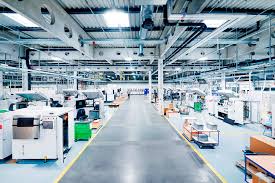
The technology behind industrial 3D-printing has gone through a major change. You can now produce everything from mascara wands to lightweight aircraft parts with a precision, functionality and lead time that traditional production methods often can’t match. Despite this, the Nordic countries are still far behind the rest of world and countries like the United States when it comes to investing in and embracing the technology that is believed to become an essential part of the production of the future and Industry 4.0, writes Story Media in this article.
Fourth Industrial Revolution
The race towards becoming a leading player in the fourth industrial revolution has started. While the Nordic countries are far ahead within several new technologies a majority of the countries’ companies have not yet embraced the fast growing technology that is industrial 3D printing, also known as additive manufacturing. The technology is believed to play a major part in Industry 4.0 and analysts predict that the market will turn over 20 billion dollars by 2020 and grow to 250 billion by 2025[1].
Possibility to win market shares
Seeing as we are competing on a global market, Nordic companies are risking both losing market shares as well as job opportunities if they stay behind. In the same way you can win market shares if you become a frontrunner, says Christer Bengtsson, Regional Manager Nordic & Balticum at EOS, a global leading company within industrial 3D printing.
– The Nordic countries are at a leading edge when it comes to technological innovations and digital solutions but they have not yet realized the great value of industrial 3D printing as a means of competition and enabler of innovation. Large economies such as Germany, The United States, The United Kingdom, Japan and China are in arms race and already several steps ahead[2]which means you have to act now unless you want to lose the race.
«The race begins now»
The reasons behind other countries being ahead within the field are several. Apart from investing in startups and suppliers within industrial 3D printing countries such as The United States and Germany simply have better prerequisites when it comes to academy and research connected to the field.
– Some of the countries also put more focus on production and industries within the fields that have the most to gain from industrial 3D printing.
Even though the Nordic countries are behind we can see that the knowledge about the possibilities and challenges in the production of the future is growing, says Christer.
– Ithink the Nordic countries are starting to join the race and thereare concrete initiatives aiming to help us catch up. Investments arebeing made but we can become much better in working together withacademy, institutes and the industry. The race begins now and thereis every opportunity to even become leading within certain areas. Thekey is to focus on the parts of the process that are crucial and thatgoes together with strong suits that already exist in the region.




